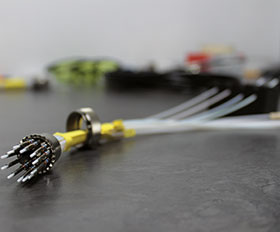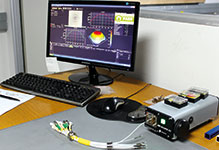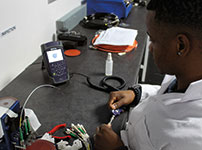

Ask an astronomer the first thought that comes to mind when you say 'Square Kilometre Array' and their response would be something like “All those stars! Imagine all the new things we’ll be able to see and learn about the cosmos.”
Ask an electronic engineer and it’ll be closer to “All that data! How the heck are they going to manage it?”
In summary, the Square Kilometre Array (SKA) radio telescope will be built in Australia and South Africa (the Karoo, to be specific). It will operate over a wide range of frequencies and its size will make it 50 times more sensitive, and up to 10 000 faster (in terms of its survey speed) than the best radio telescopes of today.

To illustrate the enormity of the engineering challenges involved in data collection, transportation, processing and analysis, here are a few facts and figures gleaned from the SKA website:
• The SKA will be so sensitive that it will be able to detect an airport radar on a planet tens of light years away.
• The central computer will have the processing power of about one hundred million PCs.
• The dishes of the SKA will produce 10 times the global Internet traffic.
• The SKA will use enough optical fibre to wrap twice around the Earth.
On that last point, the fibre-optic cable assemblies – a critical component of the system – are being manufactured in a high-tech lab built to purpose by Hiconnex at its premises in Centurion. The company began working with the SKA Organisation as far back as 2005, to assist in developing the requirements for this aspect of the project. It then went on to win the tender, and is the only company in South Africa with the capabilities to produce these assemblies

At the facility the company established in 2013, dubbed ‘The Fibre Lab’, manufacturing commenced in January this year, and is performed by three specially trained technicians assigned to the task. Roughly 75 sets of the assemblies will be delivered for the first phase by October, with a further 190 to follow for the next phase.
Hiconnex manufactures two different fibre-optic cable assemblies: an in-the-box one and a rugged outdoor assembly. The technical specifications are predictably strict given their importance, with an insertion loss requirement for both single-mode and multimode fibre types of less than 1,00 dB at 1550 nm and 850 nm wavelengths. Glenair GHD connectors are used on both cable assemblies, and the cable is a 12-core, thixotropic gel locked, glass composite reinforced cable approximately 5,8 mm in diameter.

The outdoor assembly can withstand a crushing force of 100 N and is made to endure temperatures of -10°C to +70°C. Phase stability testing was conducted by SKA on the cable before production started at Hiconnex. The inside-the-box assembly is EMI shielded and IP rated, with fibre-optic termini keyed for APC connection and non-keyed for UPC connections. Each connector can accommodate 16 fibre-optic channels.
For more information contact Hitesh Pema, Hiconnex, +27 (0)12 661 6779, [email protected], www.hiconnex.co.za
| Tel: | +27 12 661 6779 |
| Email: | [email protected] |
| www: | www.hiconnex.co.za |
| Articles: | More information and articles about Hiconnex |

© Technews Publishing (Pty) Ltd | All Rights Reserved